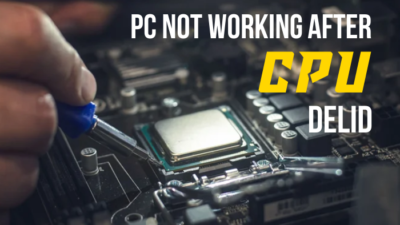The processor is one of the crucial elements in the rig. It processes all the tasks that you through to your PC. And with these tasks at hand, it produces heat.
Though it can tolerate more extensive heat than other components, overheating may shorten CPU lifespan.
For this reason, you can often face sudden shutdowns, below-average performance by thermal throttling, dropping clock speed, blue screen, and many more.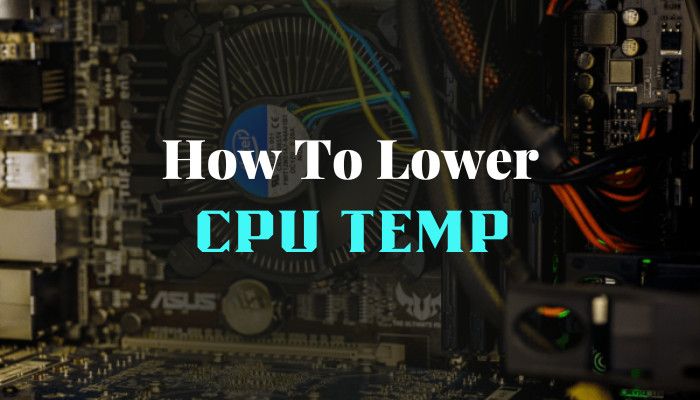 Nevertheless, you can apply numerous tactics to lower your CPU temp if facing an overheating issue. And in the below article, I will thoroughly brief some practical steps to resolve your Processor overhitting.
Nevertheless, you can apply numerous tactics to lower your CPU temp if facing an overheating issue. And in the below article, I will thoroughly brief some practical steps to resolve your Processor overhitting.
How to Reduce Your CPU Heat
Most of the time, cleaning your PC or changing the fan speed from BIOS can decrease CPU temperature. Additionally, reapply thermal paste when your PC is 2 years old. Upgrading the CPU cooler can also decrease your CPU heat. Executing these actions will reduce the temperature.
Overheating is something that no user wishes to experience. Furthermore, everyone wants the most performance from their processor and other PC components. Excessive heat reduces performance and the lifespan of the CPU along with other parts of your machine.
I’ve already mentioned some steps. Next, I’ll go over those and some other strategies in the below section. Also, how you can use them to keep your processor safe from overheating and how you can identify the CPU is overheating. So, just follow along.
1. Limit Your CPU Usage
In case you play CPU-intensive games or perform powerful graphics-related tasks, your CPU obviously will run hot.
So you must isolate the concept that you might not be doing it wrong. Sometimes there are so many tabs we just keep piling up on chrome. These little things just keep your CPU heavy and raise the temps.
Use carefully, and understand the limitations of your machine. Don’t push it so much. Take a look at the task manager and make necessary adjustments to your usage. Aslo, from the task manager you will find the usage of desktop window’s manager CPU usage which is high for the most scenarios.
2. Clean The Rig
Your PC fans consume dust in times of airflow. And with time, this dust piles up and bothers the airflow and other activities of the units.
If you confront the overheating issue, it’s better to clean the entire machine. Clean with a compressed air jet and wear a mask. Clean the fan blades for better flow. It’s better to make a habit of cleaning your pc often, at least once a month.
3. Organize your Cables
There are so many cables you need to connect to different places inside the desktop. Also, unorganized cables can disrupt your airflow and more furiously, these can cause your fan to halt by touching them.
You need to take some time to organize the cables. That can ensure swift airflow and a cleaner look. Over and above at that time of cleaning, these will help you greatly. Just think about cleaning an organized machine and another one that is full of thrones.
4. Control Fan Speed From BIOS/Hub
Almost every UEFI BIOS allows users to change the fan speed or set the speed curve to their liking. Usually, the option is set to Auto and does not work to its full potential. However, you can change it to suit your needs with the info on the CPU fan’s RPM guide.
Also, with fan hubs, you can control the PC fans with specific software. Many PC cases and fan builders have recently made their hub and app to control the rotating speed and RGB effects.
Phentakes, Corsair, and many more are building these fan and RGB control hubs. And you can use their app for fan control. You can also use third-party applications like SpeedFan if you are not comfortable using BIOS to change the fan speed.
5. Add More/Better Fans
Having fewer fans than your CPU requires, increases the risk of overheating. It is preferable to add fans if necessary.
It’s always beneficial when you can increase the airflow in your machine. It keeps the temperature low and reduces the overheating problem by adding more or better fans. Sufficient airflow is one of the most effective ways to keep the temperature low.
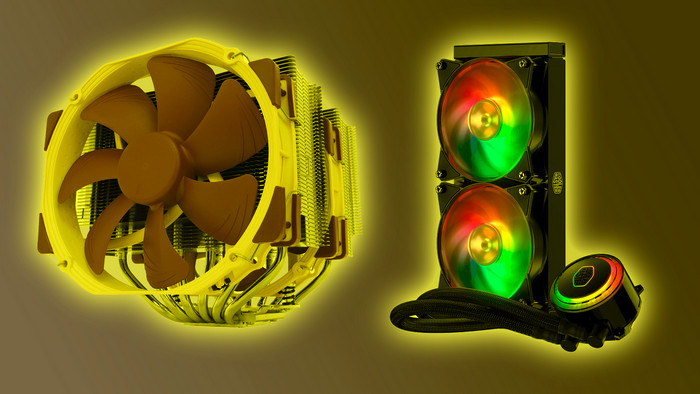
It is best to position the fan to inhale fresh air from the outside and exhale hot air from the inside. More intake, less release, or vice versa, is not a good practice for efficient airflow. It’s best to keep the proportions 50:50.
6. Get a Better PC Case
The PC case design is just getting better and better nowadays. There are different types of cases with targeted desirability, like water and air cooling solutions. If your claim is old-designed and not optimized enough, it’s better to get a case with your preferred need.
You can get PC cases like Cooler Master MasterCase H500 and Phanteks Eclipse P500A, which are airflow optimized. Even you can get some cases that have already attached fans and there are some small micro ATX case which are well optimized.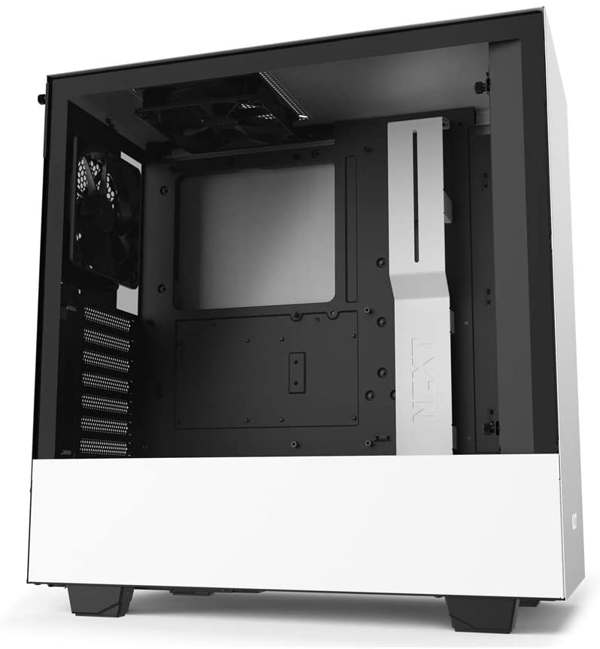
It’s evident that with a better-optimized case, you can lower the temperature. Also, it’s convenient to work with new PC cases. And most of them also support water cooling possibilities.
7. Reapply Thermal Paste
The thermal component’s job is to let the heat quickly and efficiently move from the processor unit to the cooler’s heatsink.
When applying thermal paste, sometimes it gets uneven, or some areas stay out of a thermal component. Also, with a prolonged period of time, it dries up or degrades. And it’s a verified reason for the heating issue.
Thermal components are cheap and easy to reach, and you can get some well-known brands of thermal paste at a meager price.
Detach the cooler from your CPU. Then dip a paper towel into isopropyl alcohol and smoothly remove the old paste from your processor unit. Also, wipe the processor’s edge carefully. You can even use a cotton swab soaked with isopropyl alcohol.
It’s okay to use isopropyl or rubbing alcohol to clean your CPU’s thermal paste.
Then reapply the thermal paste evenly over the processor and attach the cooler carefully. Don’t tighten up the cooler’s single side excessively. Keep a bit of pressure, move simultaneously with each corner screw, and raise the pressure little by little.
Note: Make sure the paste doesn’t enter inside the socket. Don’t overuse the thermal paste.
Be very careful when cleaning the thermal paste off the CPU and apply the correct amount of paste.
8. Get a Third-Party Cooler For the Processor
If you push your central processor intensively and the temp stays up most of the time, then getting a third-party air cooler for your CPU is better. Stock coolers are fine, but they are not efficient as after-market coolers.
When I’m gaming with my Ryzen 5 5600G with the stock cooler, in the beginning, it performs okay, and the heat issue is okayish. But after a while, it starts to go beyond overheating, and I face sudden shutdown issues often.
Then I get an Arctic A35 ARGB CPU cooler and Thermal Grizzly Kryonaut paste. I applied the thermal solution and the aftermarket cooler, and I also changed the fan of the cooler, so my temperature drops to my desired demand.
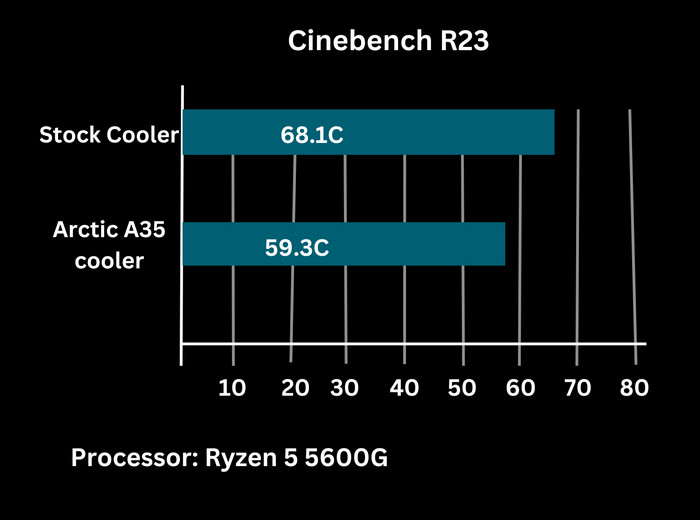
For temperature issues, these are not the only coolers. And if you are a fan of RGBs, check out the list of the top 7 best CPU AIO coolers you can buy in 2023. All these will provide remarkable results to lower the CPU temperature.
9. Get a Better Power Supply
With a better power supply and adequate voltage, it’s an excellent chance to get a balanced temperature out of the processor. Also, as a bonus, you can rearrange your cable optimally when you add PSU.
There are three types of PSU units available. Those are without modular, semi-modular, and modular. It’s better to get a semi or full modular unit. With that, it’s easy to do cable management. Check what type of power supply you have.
Modern PC builders give extra care to cable management. And it has benefits too. Messy cables sometimes hinder the airflow. That’s why it’s better to provide some time for cable management.
10. Deactivate Too Many Applications From StartUps
Sometimes many apps, features, and services pile up in startups. And all these start to run when you start the PC. This puts heavy stress on the processor, affecting the CPU temperature.
Follow these steps to deactivate apps and services lunch on startup:
- Press Windows + I key.
- Go to the Apps menu.
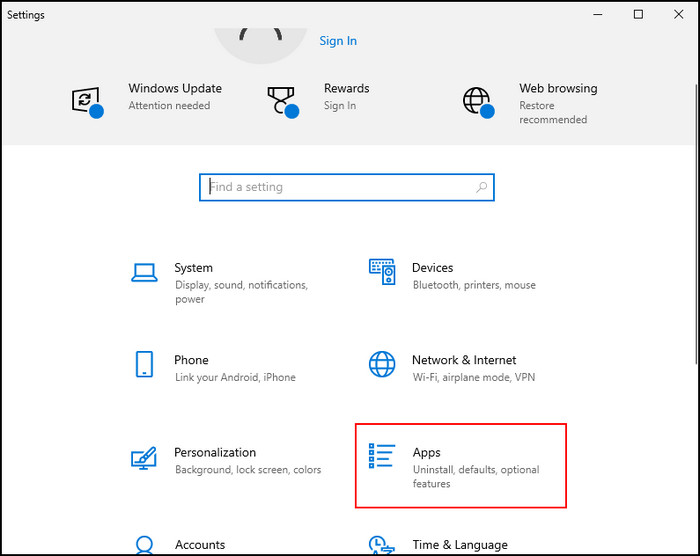
- Select Startup.
You will find all available options about which app has how much impact. Turn off auto start for unnecessary apps.
Following these steps can solve the excessive heating issue. Also, put your PC in a fresh place where air can travel properly. Take some time to manage the cables. Use tie-down to arrange them properly.
Now check the CPU temperature and monitor it regularly.
11. Limit Overclocking
Let’s just come to the point, the more you overclock your CPU, the additional heat it will produce. It’s just law. The supported hardware and features are now vast for their popularity.
You just need to dial down a bit when you find out your CPU is overheating for overclocking. And you may get better performance from your CPU, but eventually, you’re just harming your CPU and reducing its lifespan.
The simple solution is to overclock your CPU in a way that the heat is tolerable. And Try a better aftermarket fan to cool it down.
How to Reduce Laptop CPU Temperature
A laptop has not many options compared to a desktop. And though you wish, you can’t do much when you are a laptop user. Even if the window is small, there are some important methods you can try if your laptop is overheating.
You can open up the laptop and clean its fan, I mean as much as possible. Once I had to work on a graphics-related project for 6 months and I just had a simple laptop at that time. It starts to work okay at first, but after 15 minutes it’s turning into a woven.
Initially, I tried a table fan pointed at my laptop, which worked fine. However, the most effective way to reduce overheating is to use a cooling pad for your laptop. And I follow the same path.
FAQs
What is a lousy CPU temp?
Temperature around 160°F (70°C) to 195°F (90°C) is tolerable. But if it exceeds 195°F (90°C), your hardware is under heavy stress.
What is CPU cooling paste?
A thermal component is a silvery-gray substance applied to a processor before the installation of a cooling solution. It enables the efficient transfer of heat from the processor’s IHS to the CPU cooler’s base plate or water block, designed to dissipate that heat.
What liquid is used for CPU cooling?
Any liquid that transfers heat properly can be used as the liquid for the cooler. Water, deionized water, glycol/water solutions, and dielectric fluids such as fluorocarbons and PAO have commonly used fluids for water cooling.
Final Thoughts
The majority of the components inside the PC box generate heat. This may vary depending on the workload and how you use the rig. Perhaps you are a competitive gamer or work in graphics. Heat output can easily be measured by how you use the PC.
However, I have shared the best strategies for resolving this issue. And if you discover it’s overheating, act quickly. Because it can reduce the lifespan of the processor unit or, in the worst-case scenario, permanently damage it.



